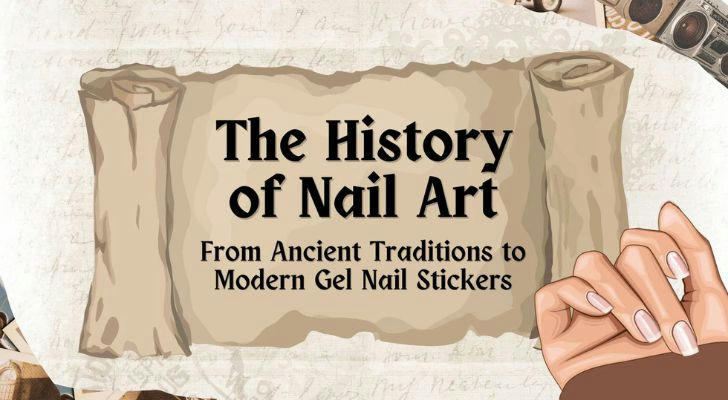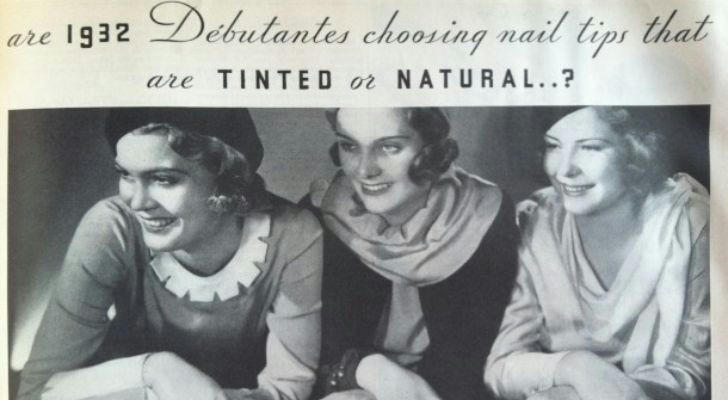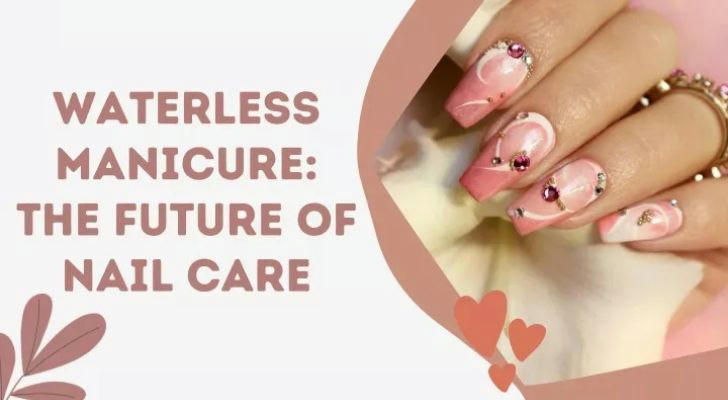The History and Evolution of Nail Art
Nail art has become a significant aspect of fashion and self-expression, evolving from ancient cultural practices to modern, intricate designs. Understanding the history of nail art provides valuable insights into how personal aesthetics have changed over time and how various cultures have shaped current trends.This article explores the rich history of nail art, from its earliest origins to contemporary styles. It also highlights how social changes and technological advancements have influenced nail design.

1. Ancient Beginnings: The Roots of Nail Art
Early Origins
The earliest evidence of nail art dates back to around 5000 BCE in India, where henna was used to stain the nails, symbolizing social status and personal adornment. In Ancient Egypt, around 3000 BCE, people dyed their nails using henna as well, with different colors representing social hierarchy.
The Ming Dynasty in China
During the Ming Dynasty (1368–1644), the elite wore long, intricately decorated nails as a sign of wealth and nobility. Nails were often painted with gold and silver, and sometimes adorned with precious stones. This practice demonstrated social status and was closely linked to fashion and identity.
2. Nail Art in the Early Modern Period
Victorian England
In the 19th century, nail care became more refined. Women in Victorian England began buffing their nails with chamois cloths and applying tinted creams for a subtle sheen. This understated approach marked the beginning of more structured nail grooming routines.
The Rise of Modern Polish
The first commercial nail polish was introduced in the 1920s, inspired by automotive paint. Companies like Revlon popularized glossy, pigmented formulas, making colored nails accessible to a broader audience. Red nails became a symbol of glamour and sophistication.
3. Nail Art in the Late 20th Century

The Bold and the Bright
During the 1970s and 1980s, nail art became bolder, with neon colors, glitter, and metallic finishes gaining popularity. This period also saw the emergence of acrylic nails, which allowed for more elaborate designs and longer shapes.
Pop Culture Influence
Icons like Madonna and Cyndi Lauper popularized vibrant, experimental nail looks. Nail art became a way to express individuality, moving beyond simple solid colors to include intricate patterns and designs.
4. The Digital Age: Nail Art in the 21st Century
Social Media's Impact
With the rise of social media platforms like Instagram and Pinterest, nail art became more accessible and diverse. Tutorials, influencer collaborations, and user-generated content have fueled creative experimentation, introducing global trends like marble nails, holographic finishes, and 3D art.
Nail Art as Personal Branding
Nail art has evolved into a form of personal branding. Celebrities like Cardi B and Kylie Jenner showcase elaborate manicures, often sparking viral trends. These designs are often highly detailed, featuring gemstones, hand-painted images, and sculptural elements.
5. Cultural Significance and Social Statements
Activism Through Nail Art
In recent years, nail art has also become a medium for social and political expression. Nail artists create designs reflecting movements such as LGBTQ+ pride and social justice, making nails not just a fashion statement but a canvas for activism.
Cultural Celebrations
Many cultural festivals incorporate specific nail designs, like intricate mehndi patterns during Indian weddings or bold, thematic manicures during Carnival celebrations. These designs honor tradition while blending contemporary artistry.
6. Modern Techniques and Innovations
Gel and Dip Powder Nails
The introduction of gel and dip powder nails revolutionized nail art by offering long-lasting and durable options. These techniques support complex designs while reducing the risk of chipping, making them popular in professional settings.
Digital Printing
Nail art printers now allow intricate and precise designs to be applied directly to the nail. This technology offers customization at a level previously unattainable, merging art and technology.
7. The Future of Nail Art

Sustainability Trends
As environmental awareness grows, many nail artists and brands are shifting towards sustainable practices. This includes using eco-friendly polishes and minimizing plastic waste through reusable tools and accessories.
AI-Driven Design
Some salons now incorporate AI to suggest personalized nail designs, using algorithms that match colors and patterns based on individual preferences and fashion trends.
8. Conclusion
The history of nail art is a reflection of cultural evolution, technological innovation, and personal expression. From ancient practices to modern techniques, nail art continues to evolve, maintaining its place as a dynamic and creative element of beauty culture. As trends progress, the fusion of tradition and modernity will likely shape the future of nail aesthetics.
Sources
- [Encyclopedia of Fashion: Nail Art Through the Ages]
- [Journal of Cultural Aesthetics: Evolution of Nail Art Practices]
- [Beauty Trends Report: The Digital Era of Nail Design]
